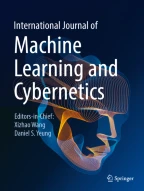Abstract
There is large number of small-sized reservoirs and widely distributed in mainland of China, but most of them short of management or the security situation is grim. Once the dam break, the loss caused by damage is very serious. Therefore, it is very necessary to look for a general assessment method to monitor the reservoir safety and avoid dam-breaking accident timely. Currently, the common method for reservoirs risk assessment is a traditional approach based on Certainty Criterion, this method can give the overall safety degree by qualitative assessment, which need a large number of monitoring data and mainly suitable for large and medium sized reservoirs. However, vast majority small-sized reservoirs were neglected and had no monitoring equipment, went short of operation statistical data, so it is difficult to assess using the traditional Certainty Criterion. Aiming at the characteristics of small-sized reservoirs, in this paper we proposed the fuzzy AHP assessment method suitable for small-sized reservoirs’ risk analysis, which is based on statistics analysis of the wracked small-sized reservoirs and effective identification of risk factors, then verified the applicability and effectiveness of this method by two engineering cases. The result show that this method can be more truly reflect the security status of the reservoir, and also has the reference value and application prospect for dangerous reservoirs reinforcement in future.


Similar content being viewed by others
Explore related subjects
Discover the latest articles, news and stories from top researchers in related subjects.References
Ministry of Water Resources of the People’s Republic of China (2014) 2013 Statistic bulletin on China water activities [M]. China Water Power Press, Beijing
Gu CS, He XF (2008) Risk analysis model for landslide mass of high slope in dam area. Sci China Ser E-Technol Sci 5:25–31
Zhou J, Zhang X, Tang C (2012) Dam risk analysis of Shaheji reservoir based on Bayesian network. J Hohai Univ Nat Sci 40(3):287–293
Lee BS, You GJY (2013) An assessment of long-term overtopping risk and optimal termination time of dam under climate change. J Environ Manage 121:57–71
Kuo JT, Hsu YC (2008) Dam overtopping risk assessment considering inspection program. Stoch Env Res Risk Assess 22(3):303–313
Xiang Y, Yuan H (2013) Risk assessment of emergency disposal of reservoir dam in high altitude areas. Disaster Adv 6(3):378–387
Goes Filho A (2013) Risk analysis in the spillway of dam Oros by excess of influent flow. Anais Da Academia Brasileira De Ciencias 85(1):405–414
Li H, Quan W (2012) Research on calculation method for hydropower station dam site scheme comparison based on landslide risk assessment. Hydrogeol Eng Geol 39(5):103–110
Chao L, Jingqiang L, Aifu W (2012) Risk sort analysis on small reservoirs group-dam. J Shandong Agric Univ Nat Sci 43:564–568
Dam Safety Management Center of the Ministry of Water Resources, [Online]. Available: http://www.damsafety.cn/LawShow.aspx?id=0000000127. Accessed 21 April 2015
Gamal AA (2011) Multi-objectives model to process security risk assessment based on AHP-PHO. Modem Appl Sci 5:246–250
Liang X, Wei C (2013) An Atanassov’s intuitionistic fuzzy multi-attribute group decision making method based on entropy and similarity measure. Int J Mach Learn Cybernet 5(3):435–444
Abdullah L (2014) A new type-2 fuzzy set of linguistic variables for the fuzzy analytic hierarchy process. Expert Syst Appl 41(7):3297–3305
Chen CJ, Yang SM, Chang SC (2013) A model integrating fuzzy AHP with QFD for assessing technical factors in aviation safety. Int J Mach Learn Cybernet 5(5):761–774
Dagdeviren M (2008) Developing a fuzzy analytic hierarchy process (AHP) model for behavior-based safety management. Inf Sci 178(6):1717–1733
Sun CC (2010) A performance evaluation model by integrating fuzzy AHP and fuzzy TOPSIS methods. Expert Syst Appl 37:7745–7754
Katagiri H, Uno T, Kato K, Tsuda H, Tsubaki H (2012) Random fuzzy bilevel linear programming through possibility-based value at risk model. Int J Mach Learn Cybernet 5(2):211–224
Yang J, Zheng CC, Jiang DJ, Hu DX (2014) Research advances in risk assessment and enforcement of unsafe reservoirs. Adv Water Sci 25(1):148–154
Naihua R, Yunguang N (2001) Statistical analysis on accidents and failures of Embankment dams. Larg Dam Saf 1(1):31–37. doi:10.3969/j.issn.1671-1092.2001.01.008
Ruipeng T, Dawei C (2009) Accident risk analysis and flood control operation of Cascade Reservoir. China Saf Sci J 19(3):119–124
Hu DX, Yang J, Zhou XD (2009) Analysis on complex uncertainty for the run risk of ill reservoir. J Northwest A F Univ Nat Sci Ed 37(3):230–234
Dagdeviren M, Yuksel I (2008) Developing a fuzzy analytic hierarchy process (AHP) model for behavior-based safety management. Inf Sci 178(6):1717–1733
Razavi Davoudi M, Sheikhvand K (2012) An approach towards enterprise architecture analysis using AHP and Fuzzy AHP. Int J Mach Learn Comput 2(1):46–51
Taylan O, Bafail AO, Abdulaal RMS, Kabli MR (2014) Construction projects selection and risk assessment by fuzzy AHP and fuzzy TOPSIS methodologies. Appl Soft Comput 17:105–116
Ali JS, Maryam M (2014) Environmental risk assessment of dams by using multi-criteria decision-making methods: a case study of the Polrood dam, Guilan Province, Iran. Human Ecol Risk Assess 20(1):69–85. doi:10.1080/10807039.2012.725159
Tiryaki F, Ahlatcioglu B (2009) Fuzzy portfolio selection using fuzzy analytic hierarchy process. Inf Sci 179(1-2):53–69
Weiwei S, Lei L (2010) Comprehensive hazard assessment model for consequences caused by dam failure based on fuzzy mathematics method. Hydro-Sci Eng 4:16–20. doi:10.3969/j.issn.1009-640X.2010.04.004
Luo YJ, Kang Z, Luo Z, Li A (2009) Continuum topology optimization with non-probabilistic reliability constraints based on multi-ellipsoid convex model. Struct Multidiscip Optim 39(3):297–310. doi:10.1007/s00158-008-0329-1
Tapaswini S, Chakraverty S (2014) Non-probabilistic uncertainty analysis of forest fire model by solving fuzzy hyperbolic reaction-diffusion equation. Fire saf J 66:8–14
Acknowledgments
This work was supported by the project of national natural science foundation of China (No.41301597), the national key laboratory of northwest arid area ecological hydraulic engineering foundation project of Shaanxi Province in China (106-221225), and supported by Program 2013KCT-15 for Shannxi Provincial Key Innovative Research Team.
Author information
Authors and Affiliations
Corresponding author
Rights and permissions
About this article
Cite this article
Jing, M., Jie, Y., Shou-yi, L. et al. Application of fuzzy analytic hierarchy process in the risk assessment of dangerous small-sized reservoirs. Int. J. Mach. Learn. & Cyber. 9, 113–123 (2018). https://doi.org/10.1007/s13042-015-0363-4
Received:
Accepted:
Published:
Issue Date:
DOI: https://doi.org/10.1007/s13042-015-0363-4



